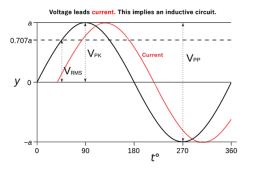Hello, and good day! I am a new solar DIYer. The title may intriguing.
I have just got my solar panels up and running. I have three ginlong solis mini 4g inverters, each with their own string of panels. I have them all configured to not inject any energy to the grid. I do not want to do this as the I still have not found any electricity company in my area that will give me a fair deal. My intention is to use as much of my solar energy my self.
In order to make my life easier, I am making a system that will automatically turn stuff on and off depending on the solar production. I still haven't finished my project though, I am using an arduino with some ADCs (ads1115) connected to some SCT013s to measure currents at different points of my electrical system. In my test bench, the SCT013 produced surprisingly precise measurements. But, after putting these devices in my home electrical cabient to measure the current between my house and the grid, and the total power consumption of my house, I noticed large discrepancies between my readings, the inverter's readings and the Ginlong Solis app. They all differ by quite a bit actually!
At this moment, my 3 inverters say they are producing 20+20+360W= 400W. The EPM is limiting the power generation on two of the inverters because my demands are not too large.
The ginlong solis app says they are producing 330W, my house is using 380W, and I'm only getting 38W from the grid (these figures don't sum up).
And my DIY device say my home is guzzling 600W, and 380 from the grid, leaving my production at about 220W.
It is possible that at such low amperage the sct013s aren't as precise and can produce way off figures. But I would like to know if anybody else has any experiences with a setup like mine to see if I'm missing something.
The ginlong solis app seems like crap. It very often says my home consumption is way higher (two to three times) than what it really is. And in spite of my DIY project proving to be precise on the workbench table, it's figure's do not match the inverter's on many ocassions.
Thank you for your patience and reading my post.
I have just got my solar panels up and running. I have three ginlong solis mini 4g inverters, each with their own string of panels. I have them all configured to not inject any energy to the grid. I do not want to do this as the I still have not found any electricity company in my area that will give me a fair deal. My intention is to use as much of my solar energy my self.
In order to make my life easier, I am making a system that will automatically turn stuff on and off depending on the solar production. I still haven't finished my project though, I am using an arduino with some ADCs (ads1115) connected to some SCT013s to measure currents at different points of my electrical system. In my test bench, the SCT013 produced surprisingly precise measurements. But, after putting these devices in my home electrical cabient to measure the current between my house and the grid, and the total power consumption of my house, I noticed large discrepancies between my readings, the inverter's readings and the Ginlong Solis app. They all differ by quite a bit actually!
At this moment, my 3 inverters say they are producing 20+20+360W= 400W. The EPM is limiting the power generation on two of the inverters because my demands are not too large.
The ginlong solis app says they are producing 330W, my house is using 380W, and I'm only getting 38W from the grid (these figures don't sum up).
And my DIY device say my home is guzzling 600W, and 380 from the grid, leaving my production at about 220W.
It is possible that at such low amperage the sct013s aren't as precise and can produce way off figures. But I would like to know if anybody else has any experiences with a setup like mine to see if I'm missing something.
The ginlong solis app seems like crap. It very often says my home consumption is way higher (two to three times) than what it really is. And in spite of my DIY project proving to be precise on the workbench table, it's figure's do not match the inverter's on many ocassions.
Thank you for your patience and reading my post.
Last edited:



